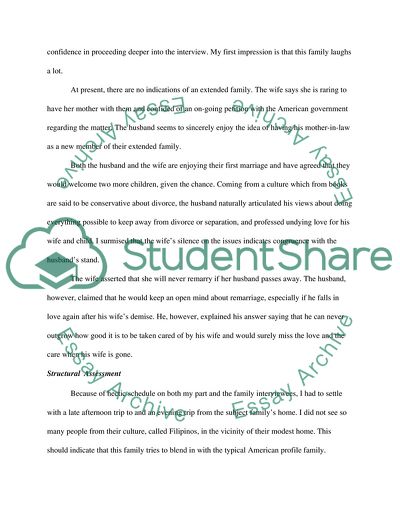Cultural Family Assessment Report Example | Topics and Well Written Essays - 3000 words. https://studentshare.org/family-consumer-science/1716817-cultural-family-assessment
Cultural Family Assessment Report Example | Topics and Well Written Essays - 3000 Words. https://studentshare.org/family-consumer-science/1716817-cultural-family-assessment.


